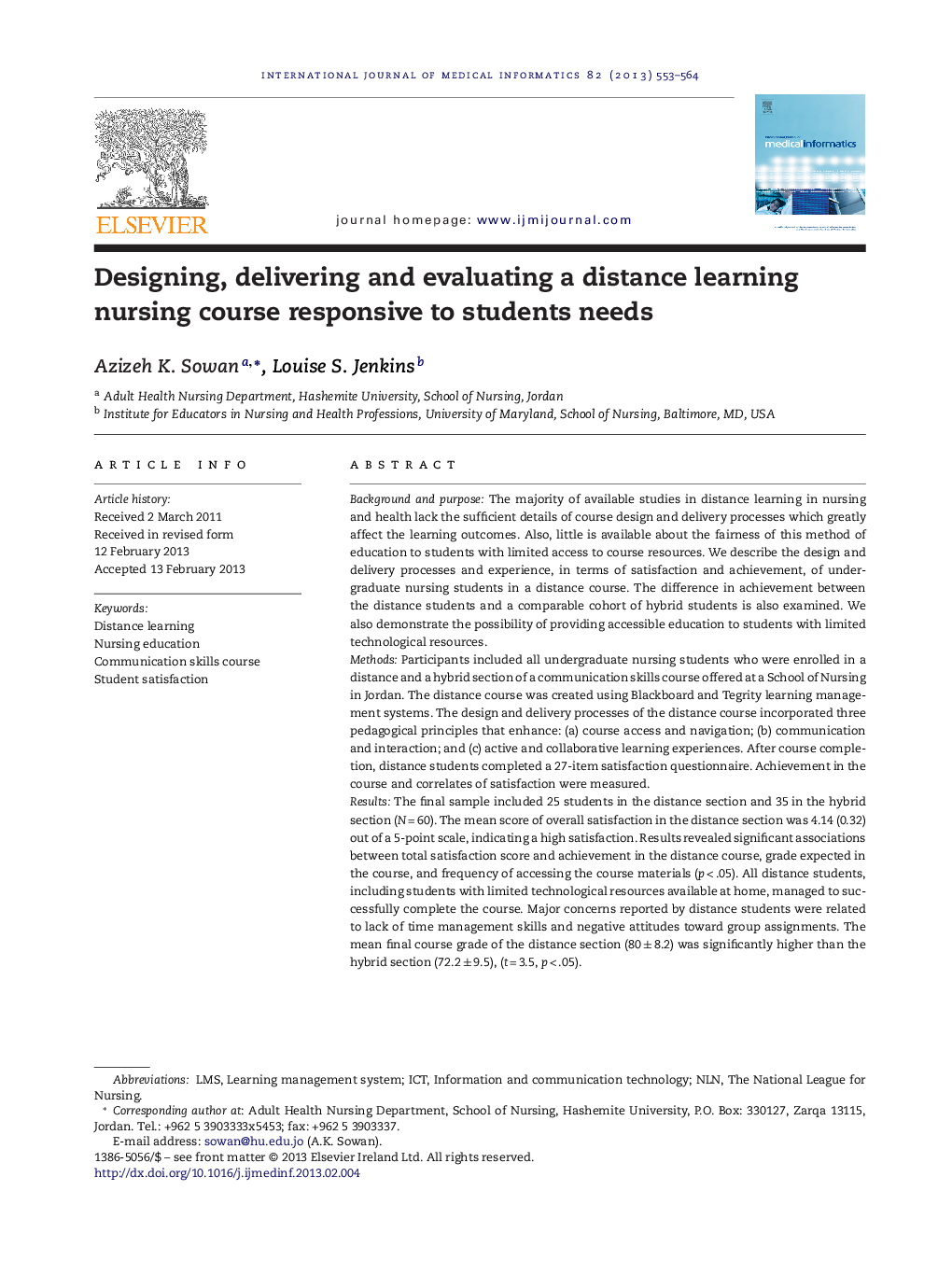| کد مقاله | کد نشریه | سال انتشار | مقاله انگلیسی | نسخه تمام متن |
|---|---|---|---|---|
| 516291 | 1449134 | 2013 | 12 صفحه PDF | دانلود رایگان |

Background and purposeThe majority of available studies in distance learning in nursing and health lack the sufficient details of course design and delivery processes which greatly affect the learning outcomes. Also, little is available about the fairness of this method of education to students with limited access to course resources. We describe the design and delivery processes and experience, in terms of satisfaction and achievement, of undergraduate nursing students in a distance course. The difference in achievement between the distance students and a comparable cohort of hybrid students is also examined. We also demonstrate the possibility of providing accessible education to students with limited technological resources.MethodsParticipants included all undergraduate nursing students who were enrolled in a distance and a hybrid section of a communication skills course offered at a School of Nursing in Jordan. The distance course was created using Blackboard and Tegrity learning management systems. The design and delivery processes of the distance course incorporated three pedagogical principles that enhance: (a) course access and navigation; (b) communication and interaction; and (c) active and collaborative learning experiences. After course completion, distance students completed a 27-item satisfaction questionnaire. Achievement in the course and correlates of satisfaction were measured.ResultsThe final sample included 25 students in the distance section and 35 in the hybrid section (N = 60). The mean score of overall satisfaction in the distance section was 4.14 (0.32) out of a 5-point scale, indicating a high satisfaction. Results revealed significant associations between total satisfaction score and achievement in the distance course, grade expected in the course, and frequency of accessing the course materials (p < .05). All distance students, including students with limited technological resources available at home, managed to successfully complete the course. Major concerns reported by distance students were related to lack of time management skills and negative attitudes toward group assignments. The mean final course grade of the distance section (80 ± 8.2) was significantly higher than the hybrid section (72.2 ± 9.5), (t = 3.5, p < .05).ConclusionsThe use of effective instructional strategies resulted in delivering successful distance learning, even for students with limited resources. Institutions have to make strategic decisions on how to optimize the use of technology to fit their individualized learning environments. Instructors need to become familiar with the characteristics of students cohort served by the course and design the course accordingly. In addition, students should be guided on how to manage their time in distance learning environments and work effectively in group assignments.
► Using effective instructional strategies resulted in delivering successful distance learning.
► Assessing student characteristics in distance learning is imperative to optimize technology use.
► Time management skills and effectively working in groups should be enhanced in distance learning.
Journal: International Journal of Medical Informatics - Volume 82, Issue 6, June 2013, Pages 553–564